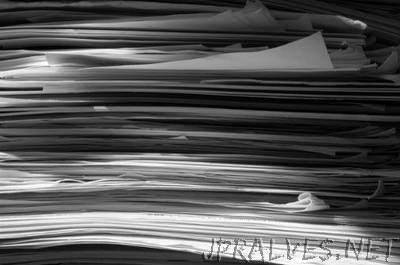
“Scientists, including an academic from the University of York, have found an inexpensive and easy way to validate the authenticity of any paper document just by taking a picture of it on a standard camera.
Analysing the translucent patterns revealed when a light shines through paper, the researchers have been able to identify a unique ‘texture’ fingerprint for every single sheet of paper.
Capturing the random interweaving of the wooden particles, they show that a unique fingerprint code can be captured and verified with 100 per cent accuracy using nothing more than an off-the-shelf camera.
They further show that the fingerprinting process remains highly reliable even if the paper is treated with rough handling such as crumpling, soaking, scribbling and heating.
The findings have been published in the prestigious academic journal ACM Transactions on Privacy and Security.
Dr Siamak Shahandashti , from the University’s Department of Computer Science, said: “Perhaps the most immediate application of our method is evaluating the authenticity of paper documents ranging from purchase receipts and invoices, to certificates, and even passports.
“What they all have in common is that the paper used is not completely opaque, and that’s enough for a bit of light to go through and for our method to work.
“In this application, our method basically provides an effective way to check if the sheet of paper the document is inscribed on is the same sheet used originally, hence catching copies and making counterfeiting practically impossible.”
Designing secure documents that provide high levels of security against forgery is a long-standing problem.
Even in today’s digital age, this problem remains important as paper is still the most common form of proving authenticity – such as receipts, contracts, certificates and passports.
One way of protecting against fraud is to embed electronics such as RFID chips within the document. This solution is currently used in e-passport to prevent forgery.”
